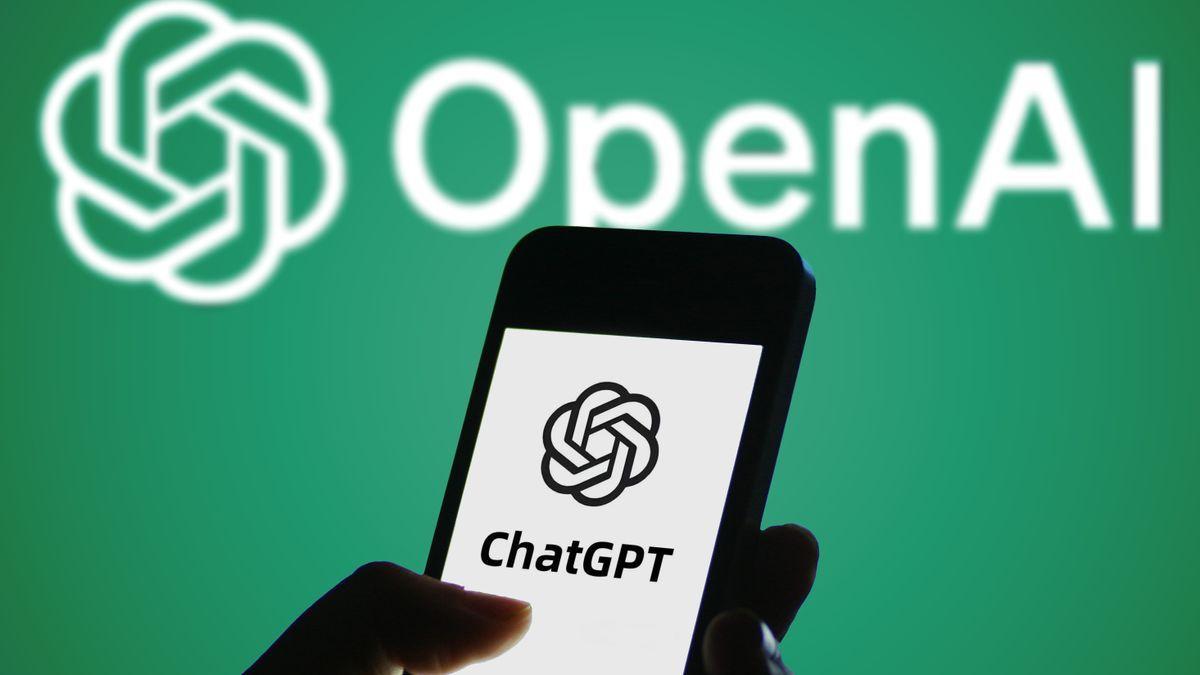Broadcom's Q2 2025 Results: AI and VMware Drive Record Revenue and Growth
2 Sources
2 Sources
[1]
Broadcom sends VMware to record revenue, margins
Chip biz surging too as CEO Hock Tan predicts optical GPU interconnects are a year or two away Broadcom's takeover of VMware continues to deliver strong revenue and margin growth, and the company expects demand for AI hardware will do likewise in coming years. The chips 'n' code company on Thursday announced its Q2 2025 results, which saw revenue grow 20 percent year over year to reach $15 billion. Net income surged 124 percent year over year to $4.95 billion. The company's infrastructure software business unit, which comprises VMware, Computer Associates and Symantec's enterprise business, earned $6.6 billion of revenue, up 25 percent year over year. Before acquiring VMware, Broadcom's quarterly infrastructure software revenue was not quite $2 billion. At the time VMware revenue was around $3.4 billion a quarter. CA and Symantec didn't grow revenue substantially in recent years so it appears Broadcom has boosted VMware quarterly revenue by around $1 billion. Operating margins for the infrastructure software group hit 76 percent, up from 60 percent a year ago. Broadcom CFO Kirsten Spears said that result "reflects our disciplined integration of VMware." On Broadcom's earnings call, CEO Hock Tan told investors 87 percent of VMware's top 10,000 customers have signed up for its flagship Cloud Foundation (VCF) private cloud bundle. Broadcom has made sales of VCF a priority and no longer sells standalone VMware products. That policy means most VMware users see increased bills, a situation Broadcom justifies by arguing that a full VCF implementation quickly pays for itself. That strategy appears to be working, but Broadcom has more work to do because Tan said Broadcom is "more than halfway" through a license renewal cycle that he thinks will last another 18 months. Broadcom's chips biz also reported strong growth, with revenue of $8.4 billion climbing 17 percent year-over-year. Sales of AI-related hardware grew 46 percent to $4.4 billion for the quarter. Broadcom has engaged with three customers it says will acquire millions of custom accelerators (XPUs), and says it is talking to another four that are considering similar purchases. "These partners are still unwavering in their plan to invest despite the uncertain economic environment," Tan told investors. "In fact, what we've seen recently is that they are doubling down on inference in order to monetize their platforms." The shift to inferencing workloads saw the CEO predict a possible "acceleration of XPU demand into the back half of 2026 to meet urgent demand for inference on top of the demand we have indicated from training." Tan forecasted growth in Broadcom's AI silicon business will accelerate to 60 percent, driven by demand for XPUs and AI networking kit. He also predicted that as AI infrastructure players build bigger GPU clusters, optical interconnects will replace copper. "That's going to happen within a year or two," Tan predicted, and pledged Broadcom will "be right in the forefront of it." Just what "it" is remains to be seen. "It may be co-packaged optics, which we [have] very much in development," Tan said, before suggesting a co-packaged pluggable optical interconnect could be the first step in a transitional phase. Revenue from Broadcom's non-AI silicon business dropped five percent. The company reported "bright spots" in the form of sequential growth for products used in broadband, enterprise networking, and storage. However, industrial sales slowed, and wireless silicon sales took an expected seasonal slide. Tan forecast steady sales for non-AI silicon, suggesting the business is mature. Broadcom is famously acquisitive, so a financial analyst asked about its merger and acquisition strategy. Tan replied that Broadcom intends to use free cashflow to pay down debt or buy back stock, and that the company would fund any future acquisitions with fresh borrowings. Investors weren't thrilled and sent Broadcom's share price down by around four percent in after hours trading. ®
[2]
AI Semiconductors, VMware Driving Broadcom To New Heights: CEO Hock Tan
'The whole premise behind going towards custom accelerators continues. It's not a matter of cost alone. It is that, as custom accelerators get used and get developed on a roadmap with any particular hyperscaler, that's a learning curve on how they could optimize the way the algorithms on their large language models get written and tied to silicon. And that ability to do so, it's a huge value-add [in] increasing algorithms that can drive the LLMs to higher and higher performance,' says Broadcom President and CEO Hock Tan. A dual boost in sales from semiconductor and VMware sales, driven by the steady growth in AI, helped Broadcom beat expectations during its fiscal 2025 second quarter and is pushing further growth going forward. Hock Tan, president and CEO of semiconductor and infrastructure software giant Broadcom, Thursday told analysts on his company's second fiscal quarter 2025 financial analyst conference call that the quarter was characterized by completely organic growth, given that it was the first full quarter that includes year-over-year comparisons since Broadcom acquired VMware. "Revenue was driven by continued strength in AI semiconductors and the momentum we have achieved in VMware," Tan said during his prepared remarks. [Related: Broadcom VMware Ups Minimum Core Purchase 'Substantially,' Levies Late Renewal Penalties] Second quarter semiconductor growth of 17 percent, year over year, was led by the 46 percent growth Broadcom saw in AI semiconductor revenue, which reached over $4.4 billion during the quarter, marking the ninth consecutive quarter of growth, Tan said. That was also driven by double-digit custom AI accelerator growth as well as 170-plus percent AI networking growth, he said. "AI networking, which is based on Ethernet, was robust and represented 40 percent of our AI revenue," he said. "As a standards-based open protocol, Ethernet enables one single fabric for both scale-out and scale-up and remains the preferred choice by our hyperscale customers." Broadcom's networking portfolio of Tomahawk switches, Jerico routers, and network interface cards is driving success within hyperscaler AI clusters, Tan said. "And the momentum continues with our breakthrough Tomahawk 6 switch, just announced this week," he said. "This represents the next-generation 102.4 terabytes per second switch capacity. Tomahawk 6 enables clusters of more than 100,000 AI accelerators to be deployed in just two tiers instead of three. This flattening of the AI cluster is huge because it enables much better performance in training next-generation frontier models through lower latency, higher bandwidth, and lower power," he said. Broadcom is also seeing progress in its XPU custom ASIC for AI, particularly in terms of helping three customers and four prospects deploy custom AI accelerators as discussed over six months ago, Tan said. "We eventually expect at least three customers to each deploy 1 million AI-accelerated clusters in 2027 largely for training their frontier models, and we forecast - and continue to do so - a significant percentage of these deployments to be custom XPUs," he said. "These partners are still unwavering in their plan to invest despite the uncertain economic environment. In fact, what we've seen recently is that they are doubling down on inference in order to monetize their platforms. And reflecting this, we may actually see an acceleration of XPU demand into the back half of 2026 to meet urgent demand for inference, on top of the demand we have indicated from training." Broadcom expects fiscal 2025 third quarter AI semiconductor revenue to be $5.1 billion, up 60 percent year-over-year, Tan said. When asked by an analyst whether Broadcom's expected third quarter 60 percent growth in AI semiconductor revenue represents a fair way of thinking about the business' trajectory for this year and next, Tan said that's exactly what the company is trying to do. "As we come into the second half of 2025 and we've improved visibility and updates we're seeing in the way our hyperscale partners are deploying data center AI clusters, we are providing you more of some level of guidance, visibility, what we are seeing, how the trajectory of '26 might look like," he said. "I'm not giving any update on '27. .... But what we're doing now is giving you more visibility into where we're seeing '26 headed." When asked about the growth of AI networking, Tan said that part of the business grows hand-in-hand with the deployment of AI accelerated clusters. "It doesn't deploy on the [same] timetable that accelerators get deployed, whether they are XPUs or GPUs," he said. "It does happen. And they're deployed a lot in scale-out where Ethernet, of course, is the choice of protocol. But it's also increasingly moving into the space of what we all call scale-up within those data centers where you have much higher - more than we originally thought - consumption or density of switches than you have in the scale-out scenario. In fact, the increased density in scale up is five to 10 times more than in scale-out. And that's the part that kind of pleasantly surprised us, and which is why this past quarter, Q2, the AI networking portion continues at about 40 percent [growth] from when we reported a quarter ago for Q1. At that time, I said I expected it to drop. It hasn't." When asked about how Broadcom views the AI opportunity from the inference side of the business, Tan said he believes there's no differentiation between training and inference when using merchant accelerators versus custom accelerators. "The whole premise behind going towards custom accelerators continues," he said. "It's not a matter of cost alone. It is that, as custom accelerators get used and get developed on a roadmap with any particular hyperscaler, that's a learning curve on how they could optimize the way the algorithms on their large language models get written and tied to silicon. And that ability to do so - it's a huge value-add [in] increasing algorithms that can drive the LLMs to higher and higher performance." This is not happening by segregating the approach between hardware and software, Tan said. "You literally combine end-to-end hardware and software," he said. "Take that journey. And it's a journey. They don't learn that in one year. Do it a few cycles, get better and better at it. And there lies the value, the fundamental value, in creating your own hardware versus using a third-party merchant silicon. You are able to optimize your software to the hardware and eventually achieve way higher performance than you otherwise could. And we see that happening." On the infrastructure software segment, Broadcom reported revenue of $6.6 billion, up 25 percent over last year and above the company's outlook of $6.5 billion, Tan said. "As we have said before, this growth reflects our success in converting our enterprise customers from perpetual vSphere to the full VCF [VMware Cloud Foundation] software stack subscription," he said. "Customers are increasingly turning to VCF to create a modernized private cloud on-prem, which will enable them to repatriate workloads from public clouds while being able to run modern container-based applications and AI applications. Of our 10,000 largest customers, over 87 percent have now adopted VCF." For its second fiscal quarter 2025, which ended May 4, Broadcom reported total revenue of $15.00 billion, up about 20 percent from the $12.49 billion the company reported for its fiscal 2024 second quarter. Revenue beat analyst expectations by $30 million, according to Seeking Alpha. Total revenue included semiconductor solutions revenue of $8.71 billion, up 17 percent over last year, and infrastructure software revenue of $6.60 billion, up 25 percent. Broadcom also reported GAAP net income of $5.0 billion or $1.03 per share, up significantly from last year's $2.12 billion or 44 cents per share. On a non-GAAP basis, the company reported net income of $7.79 billion, up from last year's $5.39 billion. Looking forward, Broadcom is guiding fiscal 2025 third quarter revenue of about $15.8 billion.
Share
Share
Copy Link
Broadcom reports strong Q2 2025 results, with significant growth in AI semiconductor sales and VMware integration. The company's focus on AI hardware and software solutions continues to drive its success in the tech industry.
Broadcom's Q2 2025 Financial Performance
Broadcom, the chips and software giant, has reported impressive financial results for Q2 2025, showcasing the success of its VMware acquisition and the growing demand for AI hardware. The company's revenue grew 20% year-over-year, reaching $15 billion, while net income surged by 124% to $4.95 billion
1
.
Source: CRN
VMware Integration Drives Software Growth
The infrastructure software business unit, which includes VMware, Computer Associates, and Symantec's enterprise business, saw a 25% year-over-year increase in revenue, totaling $6.6 billion. This growth is largely attributed to the successful integration of VMware, with operating margins for the software group reaching 76%, up from 60% a year ago
1
.CEO Hock Tan reported that 87% of VMware's top 10,000 customers have adopted the Cloud Foundation (VCF) private cloud bundle, a strategic move that has increased bills for most VMware users but is justified by the quick return on investment
1
.AI Hardware Fuels Semiconductor Growth

Source: The Register
Broadcom's semiconductor business also showed strong performance, with revenue climbing 17% year-over-year to $8.4 billion. The standout performer was AI-related hardware, which grew by 46% to $4.4 billion for the quarter
1
.The company has engaged with three customers planning to acquire millions of custom accelerators (XPUs) and is in talks with four more potential customers. Tan emphasized the unwavering commitment of these partners to invest in AI infrastructure despite economic uncertainties
2
.AI Networking and Future Projections
Broadcom's AI networking portfolio, including Tomahawk switches, Jerico routers, and network interface cards, has seen significant growth. The recently announced Tomahawk 6 switch, with a capacity of 102.4 terabytes per second, is expected to enable more efficient deployment of large-scale AI clusters
2
.Tan forecasts that AI semiconductor revenue will reach $5 billion in Q3 2025, representing a 60% year-over-year growth. He also predicts a potential acceleration of XPU demand in the latter half of 2026, driven by increasing needs for both training and inference workloads
2
.Related Stories
Future Technology Trends
Looking ahead, Tan anticipates a shift from copper to optical interconnects for larger GPU clusters within the next one to two years. Broadcom is developing co-packaged optics and exploring transitional solutions like co-packaged pluggable optical interconnects to stay at the forefront of this technological evolution
1
.Broadcom's Strategic Focus
The company's success in both AI hardware and software integration demonstrates its strategic positioning in the rapidly evolving tech landscape. Broadcom's ability to provide custom AI accelerators and networking solutions, coupled with its strong software offerings through VMware, positions it as a key player in the AI infrastructure market
2
.As the demand for AI technologies continues to grow, Broadcom's focus on both training and inference workloads, along with its investment in next-generation interconnect technologies, suggests a strong trajectory for future growth and innovation in the AI sector.
References
Summarized by
Navi
[1]










